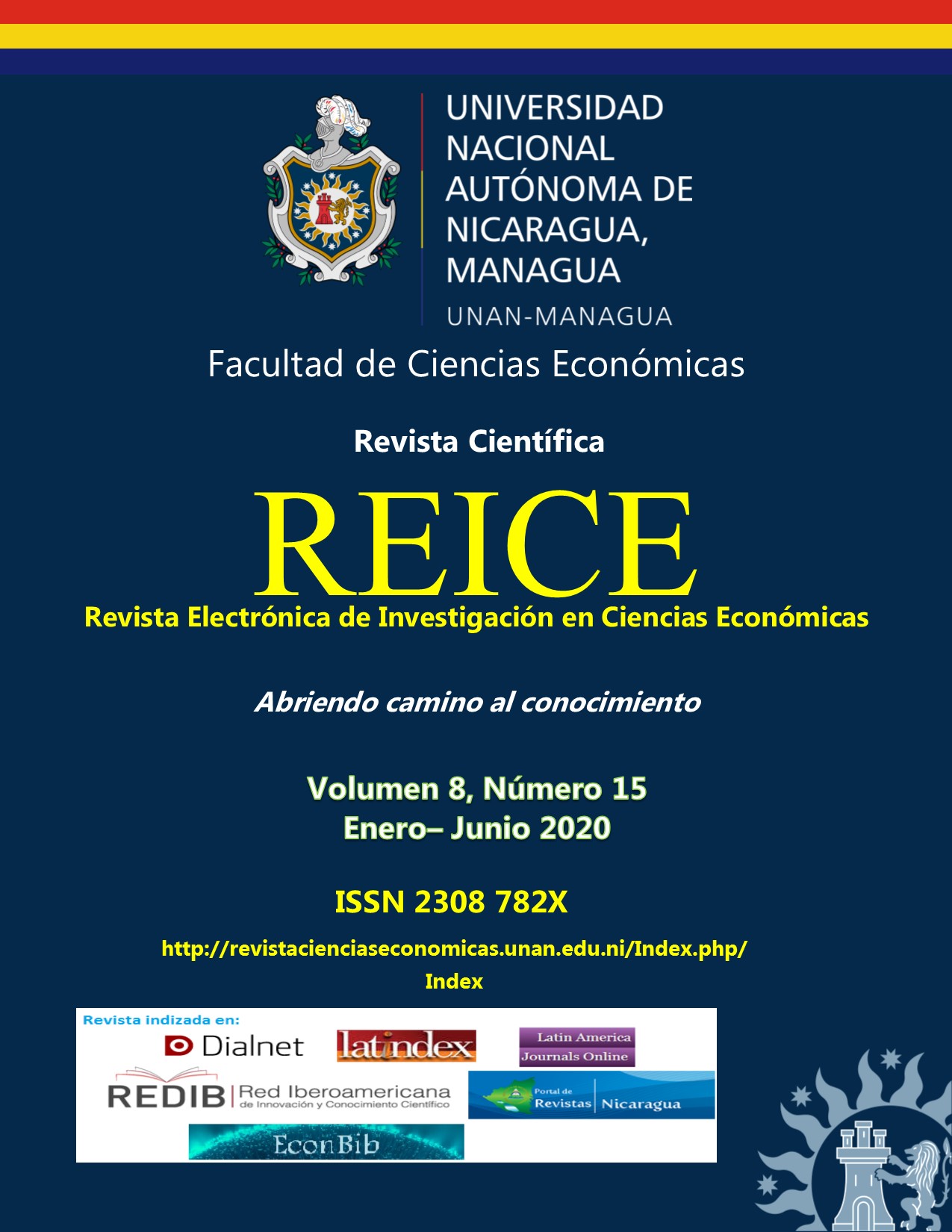Empirical evaluation of the Kuznets Environmental Curve for Nicaragua considering Law No. 217, in the period 1980-2014.
DOI:
https://doi.org/10.5377/reice.v8i15.9951Keywords:
Regression models, Kuznets environmental curve, Nicaraguan Law No. 217, economic growth and development, carbon dioxide emissions.Abstract
The main axis of this article is to evaluate the hypothesis of the Kuznets Environmental Curve (CAK) by means of quantitative models for the case of Nicaragua in the period of 1980-2014, considering the effect of Law No. 217 General General Law of the Environment and Natural Resources. As an indicator of environmental deterioration, the variable of CO2 emissions per capita (kg / hab) was used, and the indicator of economic growth was GDP per capita (US $ at current prices); In addition, to capture the effect of Law No. 217 and incorporate it into the regression analyzes, a binary variable was created (0 from 1980 to 1996 and 1 from 1997 to 2014) and its interaction with the natural logarithm of GDP per Capita. Both when considering the dichotomous variable and the term of interaction in the models, as well as in the case of omitting them, the CAK was not rejected; however, the difference was the income per critical person, since in the first case the threshold is reached with US $ 1,191 and in the second, with US $ 2,283.



